Now that the preliminaries are out of the way, let’s check out the choice items in the current Previews catalog, shall we?
Eden: It’s an Endless World! vol. 13, written and illustrated by Hiroki Endo, Dark Horse, item code APR 11 0039: It’s been ages since Dark Horse released a volume of this often excellent science-fiction, as it apparently doesn’t fly off of the shelves. I’m glad to see them sticking with it, at least whenever finances permit. It originally ran in Kodansha’s Afternoon.
A Zoo in Winter, written and illustrated by Jiro Taniguchi, Fanfare/Ponent Mon, item code APR 11 1049: Taniguchi takes an autobiographical look at his early days as a manga-ka. For my tastes, this isn’t the most promising subject for any comic, but I always admire Taniguchi’s work, even if the specific topic triggers a lukewarm reaction. It originally ran in Shogakukan’s Big Comic.
The Quest for the Missing Girl, written and illustrated by Jiro Taniguchi, Fanfare/Ponent Mon, item code APR 11 1050: This is one of Taniguchi’s best pieces of genre work, combining his obsessions with mountaineering and noir, and it’s being offered again for those who missed it the first time around. It originally ran in Big Comic.
Sayonara Zetsubo Sensei vol. 9, written and illustrated by Koji Kumeta, Kodansha Comics, item code APR 11 1084: Of all of the resumptions in this month’s listings from Kodansha, this one fills my heart with the most gladness. It provides often blistering satire of contemporary Japanese culture and has a sprawling cast of insane schoolgirls. It runs in Kodansha’s Weekly Shônen Magazine.
A Treasury of 20th Century Murder vol. 4: The Lives of Sacco and Vanzetti, written and illustrated by Rick Geary, NBM, item code APR 11 1110: Gifted cartoon historian Geary takes a look at the highly controversial trial of two accused anarchists.
Chibisan Date vol. 1, written and illustrated by Hidekaz Himaruya, Tokyopop, item code APR 11 1166: I admit to being generally suspect of Tokyopop’s new arrivals, but this one immediately struck me in a positive way: “On the crescent-shaped island of Nantucket lives Seiji, a young Japanese artist pursuing his dreams. This charming, slice-of-life story filled with warmth and pathos follows a cast of fascinating characters on the island.” There are some gorgeous sample pages in the catalog, and the plot sounds right up my alley. It’s running in Gentosha’s Comic Birz. Update: It’s been brought to my attention that Himaruya is also the creator of the very popular Hetalia Axis Powers, also from Tokyopop. I haven’t calculated precisely how this influences my enthusiasm for Chibisan Date, but I suspect it lowers it.
There are new volumes of two great series from Vertical:
- Chi’s Sweet Home vol. 6, written and illustrated by Konami Kanata, item code APR 11 1205, originally serialized in Kodansha’s Morning.
- Twin Spica vol. 8, written and illustrated by Kou Yaginuma, item code APR 11 1206, originally serialized in Media Factory’s Comic Flapper.
La Quinta Camera, written and illustrated by Natsume Ono, Viz Media, item code APR 11 1230: I believe I’ve mentioned this one before, and there may have been squeezing involved simply because I’m such a fan of Ono’s work. It’s slice of life about five men that live in an Italian apartment building. It originally ran in Penguin Shobou’s Comic SEED!
In other Viz news, there are new volumes of several series that I love a great deal:
- Kimi ni Todoke: From Me to You vol. 9, written and illustrated by Karuho Shiina, item code APR 11 1217, currently serialized in Shueisha’s Bessatsu Margaret.
- Cross Game vol. 4, written and illustrated by Mitsuru Adachi, item code APR 11 1221, originally serialized in Shogakukan’s Shônen Sunday.
- Ôoku: The Inner Chambers vol. 6, written and illustrated by Fumi Yoshinaga, item code APR 11 1236, originally serialized in Hakusensha’s Melody.
So, those are my picks. What looks good to you? And be sure to help me pick a boys’-love title and vote in this month’s dubious manga poll!














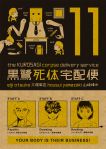




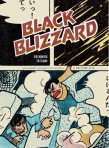



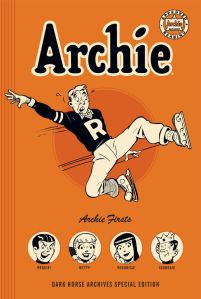


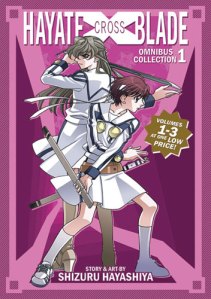




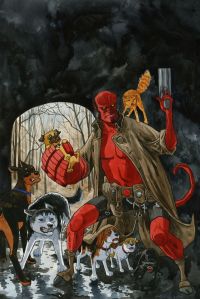







Upcoming 9/15/2010
It’s precision vulgarity week on the ComicList! By this I mean that there are a bunch of comics out this week that use shocking, potentially distasteful material to very good effect.
First up is the second volume of Felipe Smith’s Peepo Choo (Vertical). I agreed with Kate (The Manga Critic) Dacey on virtually every point regarding the first volume, but especially this one:
Smith rectifies that in the second volume, and he endows his ensemble of losers and freaks with a level of sympathy notable in part for its near-total absence the first time around. It’s not that he’s any kinder to his cast. He dangles possibility in their paths only to yank it away. But their pains and disappointments feel more like a properly moving experience than a dazzling exercise in narrative cruelty, and Smith rounds out even the type-iest of members of his cast. The characters in Peepo Choo – the nerd who finally gets to go to his otaku holy land, the creepy jerk who just wants to lose his virginity, the spree killer who yearns to embody American phrases he doesn’t even understand, the smartest girl in class who’s undermined by her own body – all edge closer to a full, possibly crushing understanding of and liberation from their own misery (or at least the teasing promise of liberation).
The book is still brutally violent and creepily sexed up, but there’s nothing clumsy about the application of this kind of content. Smith knows exactly what he’s doing when a character spits a tooth in someone’s eye and another gets aroused watching it happen. I had my doubts that he was going anywhere particularly, peculiarly interesting with this kind of effect based on the first volume, but the tone really clicks this time around, and I’m abidingly curious as to how things will wrap up in the third and final book. For me, good satire, especially satire of individual obsessions and cultural fetishes, has to have a beating heart, something that pushes the reader past pity and into empathy, however limited, with the satire’s objects and victims. Smith makes that leap. (These remarks are based on a complimentary copy provided by the publisher. Oh, and Melinda [Manga Bookshelf] Beasi agrees with me, which I always take as a good sign.)
It isn’t nearly as dense or ambitious as Peepo Choo, but the sixth volume of Kiminori Wakasugi’s Detroit Metal City (Viz) is likely to be as coarse and funny as the previous installments. If you’re in the San Francisco area on Saturday, Sept. 18, you can catch the live-action movie adaptation of the death-metal satire, which is supposed to be pretty great.
It’s not on the ComicList, but the shop in my area lists the sixth volume of Adam Warren’s hilarious and smutty super-hero satire, Empowered (Dark Horse), as due to arrive tomorrow. This time around, Warren looks at the often transitory nature of death among the spandex set.
And the 11th volume of The Kurosagi Corpse Delivery Service (Dark Horse), written by Eiji Otsuka and illustrated by Housui Yamazaki, is a very welcome arrival indeed. This series takes a satirical look at ghost stories, people who help the dead reach their final reward, and pokes fun at the ambivalent ways we respond to the shuffling off of our mortal coil.
What looks good to you?